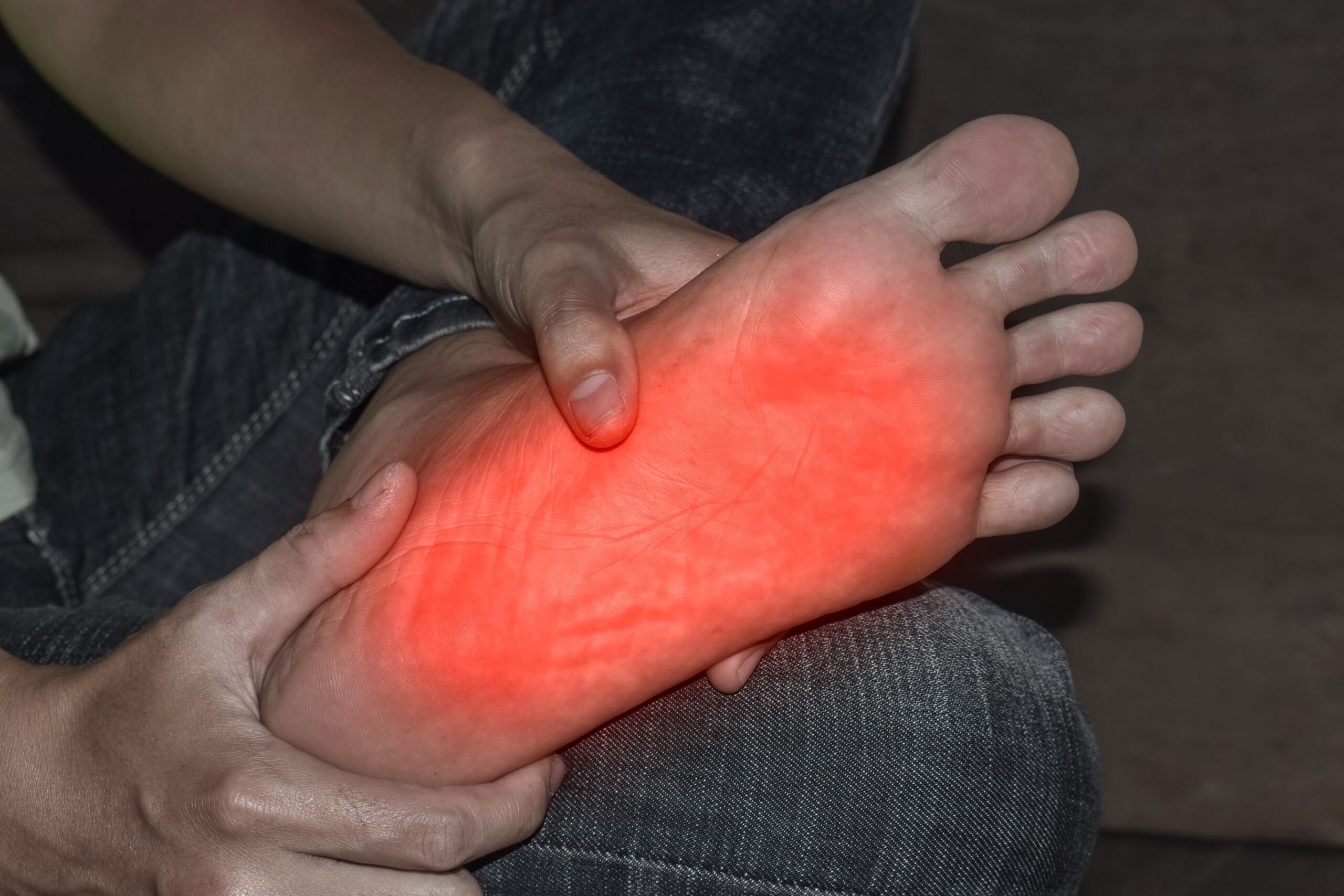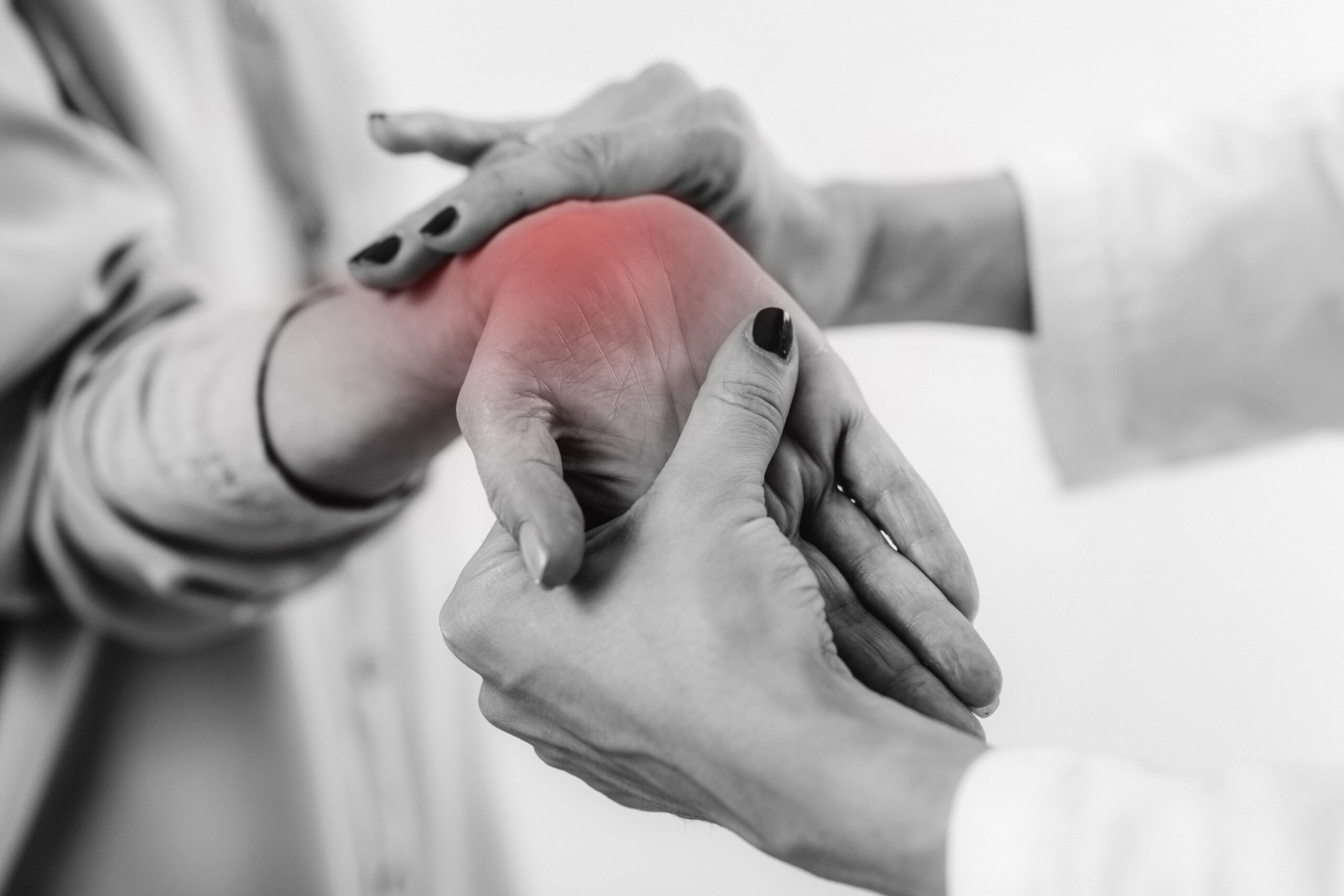Peripheral Nerve Disorders
Peripheral nerve problems can cause numbness, tingling, pain and weakness. With precise diagnosis and a tailored plan, many symptoms improve and function can be protected.

Polyneuropathies
What it is: Symmetrical nerve damage—classically a “stocking–glove” pattern—due to causes such as diabetes, alcohol/toxins, nutritional deficiency (e.g., B12), thyroid/kidney disease, or hereditary conditions like Charcot–Marie–Tooth (CMT).
Symptoms: Burning pain, pins-and-needles, numbness, imbalance, and sometimes weakness or autonomic symptoms (dizziness on standing, sweating changes).
Assessment: History and examination; nerve conduction studies (NCS) and EMG; targeted blood tests (glucose/HbA1c, B12 & MMA, thyroid, renal/liver profile, serum protein electrophoresis); genetics where CMT is suspected.
Treatment: Address the cause (glucose control, B12 replacement, medication review); stepwise neuropathic pain management; physiotherapy for strength/balance; foot care and falls prevention.

Mononeuropathies
What it is: Damage to a single nerve—commonly carpal tunnel (median nerve), ulnar neuropathy at the elbow, or peroneal nerve palsy at the fibular head.
Symptoms: Numbness/tingling in the nerve territory, hand weakness/clumsiness, foot drop or pain.
Assessment: Focused examination; NCS/EMG (± ultrasound) to confirm site and severity.
Treatment: Splints/activity modification, physiotherapy/ergonomics, weight and sleep positioning advice; steroid injection or surgical decompression for persistent or severe cases.
Radiculopathies
What it is: Nerve root compression/irritation (e.g., cervical or lumbar disc disease).
Symptoms: Neck/back pain radiating into arm/leg with dermatomal numbness, reflex change or weakness.
Assessment: Clinical pattern, MRI spine when indicated, and EMG to differentiate root from peripheral nerve disease.
Treatment: Analgesia, targeted physiotherapy and pacing; epidural injections or surgical referral for red flags or refractory deficits.
Plexopathies
What it is: Injury/inflammation affecting the brachial or lumbosacral plexus (trauma, diabetes, inflammation, radiotherapy).
Symptoms: Painful onset with weakness/sensory loss spanning multiple nerve territories.
Assessment: NCS/EMG to map lesion level and severity; imaging (e.g., MRI neurography) where appropriate; screening for contributory causes.
Treatment: Treat the cause, pain control, and structured rehabilitation to restore function and prevent contractures.
Guillain–Barré Syndrome (GBS)
What it is: Acute immune-mediated demyelinating neuropathy causing ascending weakness, areflexia, sensory symptoms and possible breathing/swallowing or autonomic involvement.
Assessment & treatment: Emergency hospital care; confirm with NCS/EMG and CSF (albuminocytologic dissociation). Managed with IVIg or plasma exchange, close respiratory monitoring and rehabilitation.
Outlook: Many recover substantially, though rehabilitation and follow-up are important.
Chronic Inflammatory Demyelinating Polyneuropathy (CIDP)
What it is: A chronic, GBS-like immune neuropathy with progressive (>8 weeks) or relapsing weakness and sensory loss.
Assessment: NCS/EMG showing demyelination/conduction block, CSF (raised protein), and, selectively, root/plexus imaging.
Treatment: Corticosteroids, IVIg and/or plasma exchange, with steroid-sparing agents when needed; physiotherapy, orthotics and pain strategies support long-term function.
How Dr Francesco Manfredonia can help
-
Pinpoint diagnosis using expert NCS/EMG to distinguish polyneuropathy, mononeuropathy, radiculopathy and plexopathy.
-
Targeted investigations (bloods, imaging, genetics) to identify the cause and guide treatment.
-
Personalised plans combining cause-directed therapy, evidence-based pain control and rehabilitation.
-
Safety first: clear escalation routes and follow-up to track recovery and adjust care.
Urgent advice: call 999 or attend emergency care for rapidly worsening weakness, breathlessness, difficulty swallowing, or new bowel/bladder loss (possible GBS or cauda equina).
FAQ
What’s the difference between neuropathy, radiculopathy and plexopathy?
Neuropathy affects peripheral nerves (often symmetrically), radiculopathy involves the nerve root, and plexopathy involves the nerve network before it branches into individual nerves.
Are NCS/EMG painful?
NCS feel like brief taps; EMG uses a fine needle and is usually well tolerated. Any soreness settles quickly.
Can nerves recover?
Yes—many do, though slowly (often quoted around 1 mm/day for axonal regrowth). Treating the cause and rehabilitation improve outcomes.
Will I need an MRI?
For suspected radiculopathy or complex plexus problems, MRI is often helpful; for many neuropathies, blood tests and neurophysiology suffice initially.
My feet burn but tests are normal—why?
You may have small fibre neuropathy, which can require additional tests (e.g., skin biopsy, autonomic studies). Management still helps symptoms and safety.
When is surgery needed for carpal tunnel/ulnar neuropathy?
If symptoms are severe, there is muscle wasting/weakness, or conservative measures fail, surgical decompression is considered.
Can diabetic neuropathy improve?
Better glucose control can stabilise or improve symptoms. Pain and function often respond to targeted therapy and rehabilitation.
Will I be able to drive/work?
Usually yes, but it depends on strength, sensation and safety. You’ll receive tailored advice and documentation where required.
BOOK YOUR CONSULTATION
Book a consultation with Dr Francesco Manfredonia (Dr FM) for clear diagnosis, compassionate care and a plan built around your life and goals.
